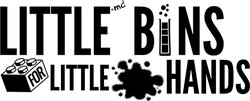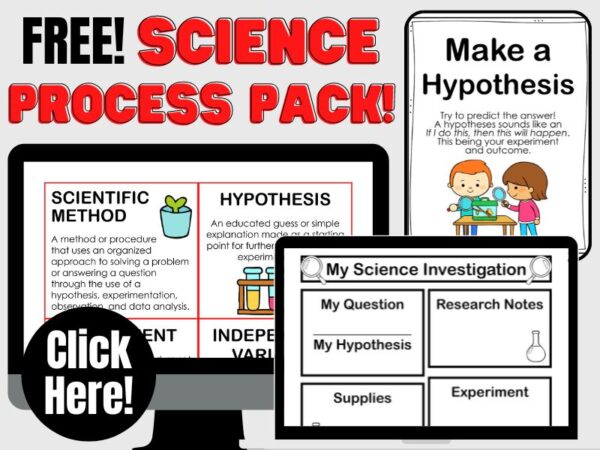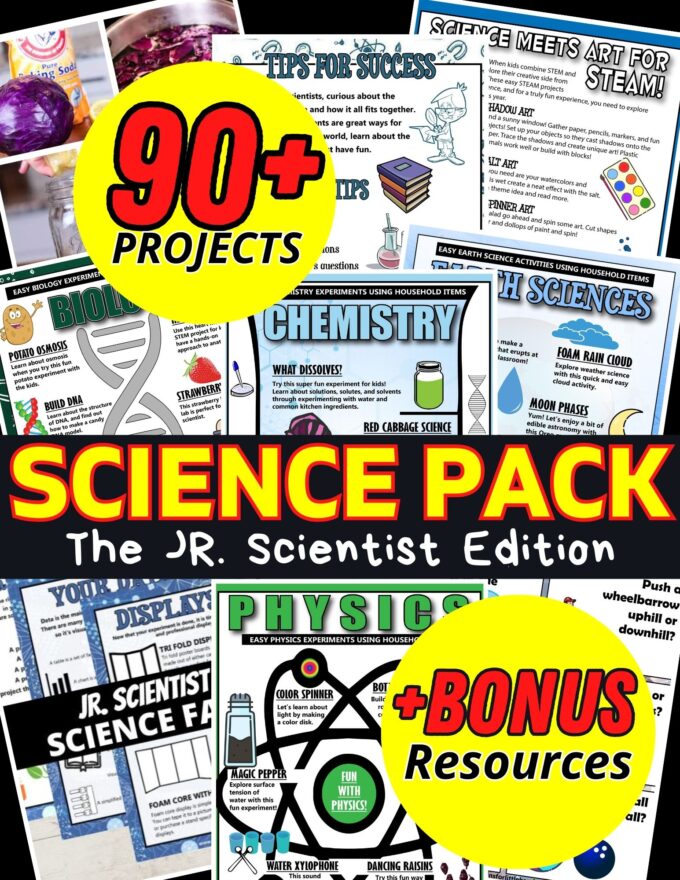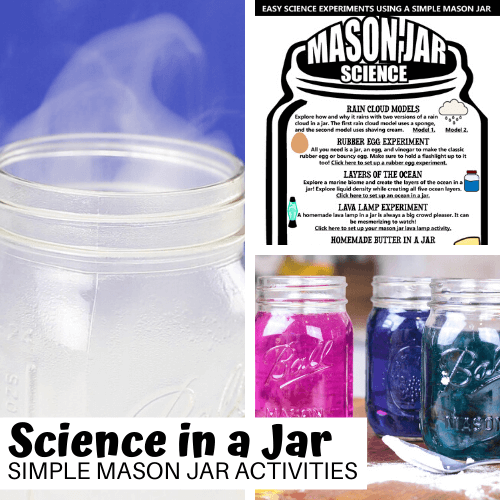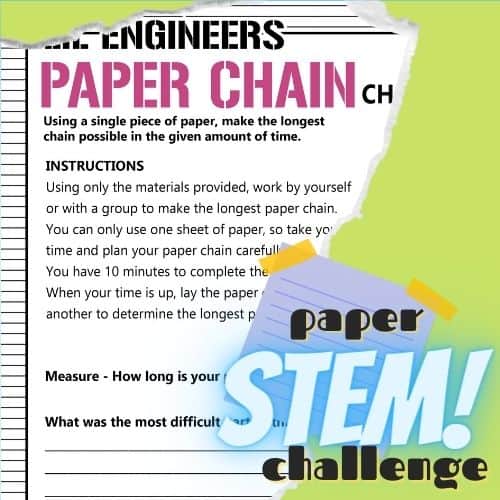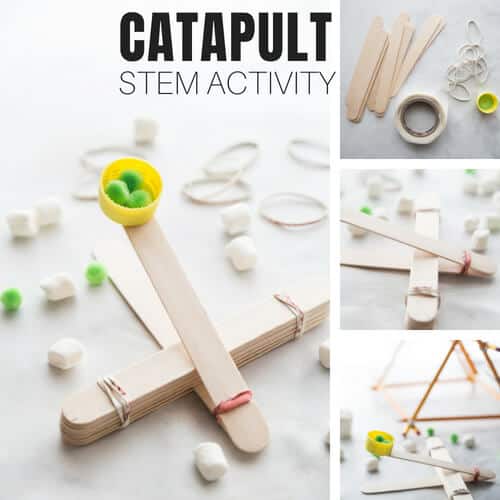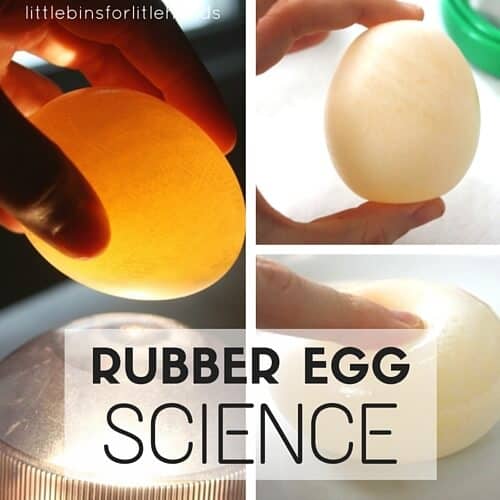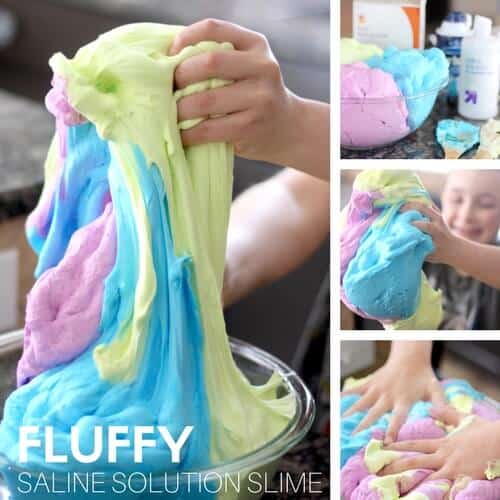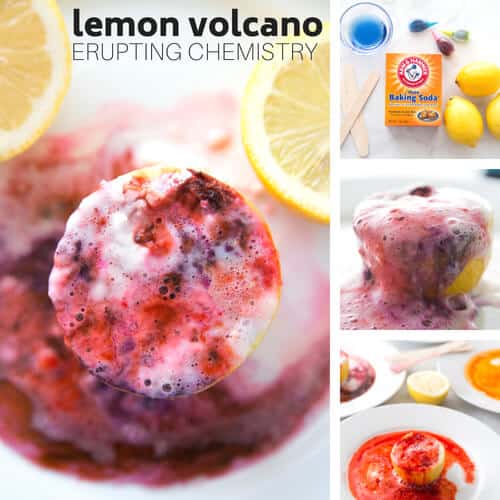If you have a junior scientist who loves to whip up bubbling, frothing brews in his or her chemistry lab, then this elephant toothpaste experiment is a MUST! You can try this with regular household hydrogen peroxide and the more commonly used hydrogen peroxide you need to get at a beauty store or through Amazon. Explore classic science experiments with a super simple setup, particularly thermogenic reactions!
ELEPHANT TOOTHPASTE EXPERIMENT
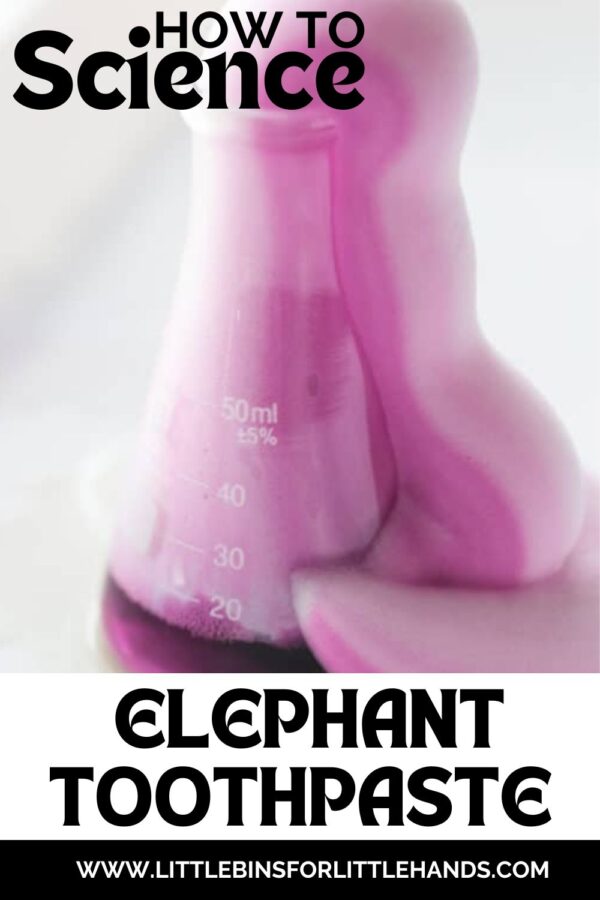
CLASSIC SCIENCE EXPERIMENT
This year, we are exploring some of favorite science experiments that you can easily do at home or in the classroom.
Kids of all ages will love this exothermic chemical reaction using hydrogen peroxide and yeast. Not only does it produce a lot of froth when the ingredients combine together. Hence the name! The reaction also produces heat!
If your kids love chemistry… check out our Cool Chemistry Projects Here!
IS ELEPHANT TOOTHPASTE SAFE?
Can you touch elephant toothpaste? No, elephant toothpaste is not safe to touch! This elephant toothpaste experiment uses a stronger percentage of hydrogen peroxide than is usually found in homes, we don’t recommend touching it! Unreacted hydrogen peroxide can be an irritant.
However, if you use household hydrogen peroxide (3%) found in most stores, we have safely touched the foam.
We do strongly recommend that adults only handle the hydrogen peroxide. It’s not meant for play, and unreacted hydrogen peroxide may irritate skin or eyes! Wash hands thoroughly after the experiment. Wear safety goggles!
Our baking soda and vinegar experiments are a better alternative for younger kids if you are concerned about them coming in contact with the hydrogen peroxide.
CLICK HERE TO GET YOUR FREE PRINTABLE SCIENCE WORKSHEETS!
WATCH THE VIDEO!
ELEPHANT TOOTHPASTE EXPERIMENT
Grab the supplies below, and let’s check out this fascinating chemical process! To extend the experiment for older kiddos, compare household peroxide to the 20-Volume hydrogen peroxide!
ELEPHANT TOOTHPASTE INGREDIENTS:
- 20-Volume hydrogen peroxide, which is 6% (you can also use regular household hydrogen peroxide, but the reaction will be smaller)
- 1 Tablespoon of dry fast-acting yeast (use the little packet)
- 3 Tablespoons of warm water
- Dish Soap
- Liquid food coloring (color it for whatever occasion you like)
- 16 Oz container will work best – You can use an empty plastic bottle or a plastic soda bottle.
- Safety goggles
TIP: We have these fun glass beakers below, but the glass may not be your best choice! The key is to have a narrow opening at the top to force out the chemical reaction.
HOW TO SET UP AN ELEPHANT TOOTHPASTE EXPERIMENT
STEP 1. Place down a tray first to catch the eruption. Then pour 1/2 cup of hydrogen peroxide liquid into your container or bottle.
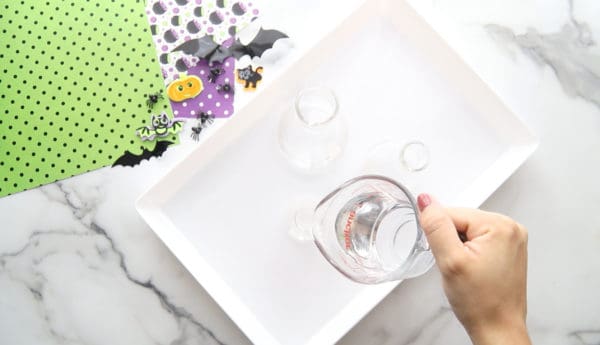
STEP 2. Add about 10-20 drops of food coloring.
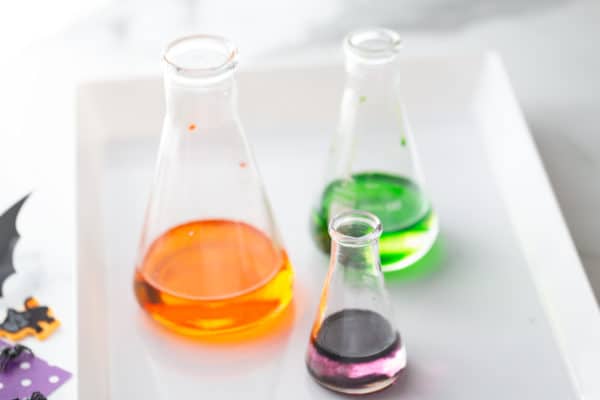
STEP 3. Add a squirt of dish soap or about one tablespoon of dish soap and give it a gentle swirl.
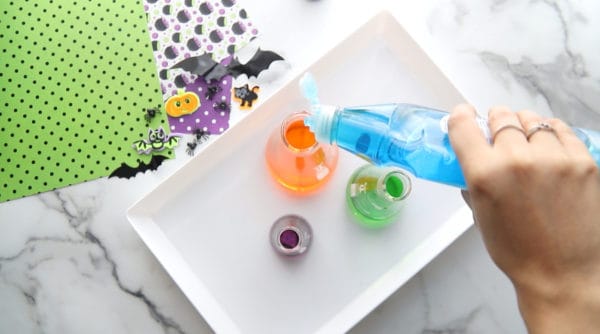
STEP 4. Make the yeast mixture. In a small container, mix the warm water and yeast until fully incorporated.
STEP 5. Pour the yeast mixture into the hydrogen peroxide/soap mixture and watch what happens!
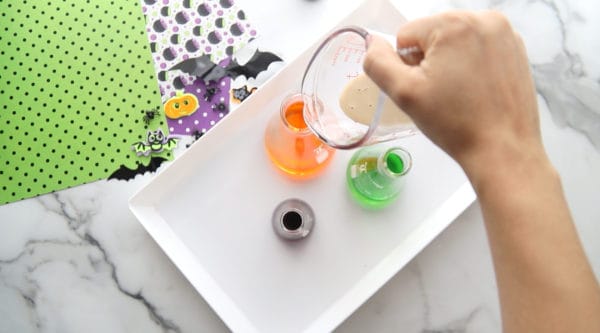
Lots of bubbles or more like a snake of foam that comes out of the opening! Toothpaste for an elephant!
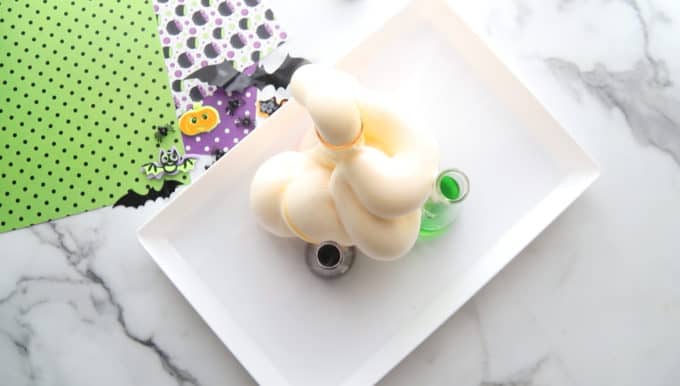
The foam produced becomes a soapy-yeasty mess that you can rinse down the sink.
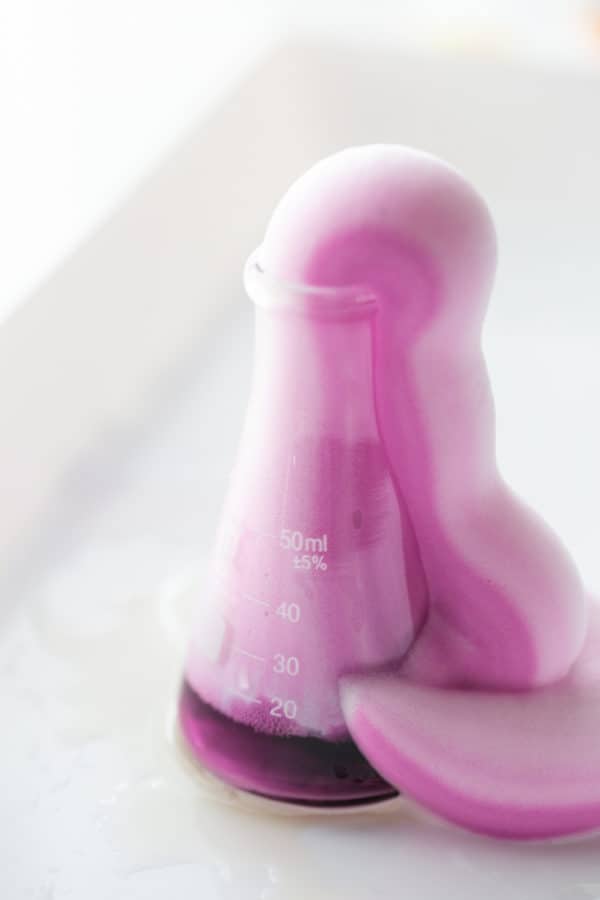
WHY DOES HYDROGEN PEROXIDE FOAM?
The reaction between the hydrogen peroxide and the yeast is called an exothermic reaction. You will feel the warmth outside the container because energy is being released.
The yeast (also known as a catalase because it acts as a catalyst) helps to remove the oxygen from the hydrogen peroxide creating tons of tiny bubbles (oxygen gas) that make all that cool foam. The foam is a combination of the oxygen, water, and dish soap you added.
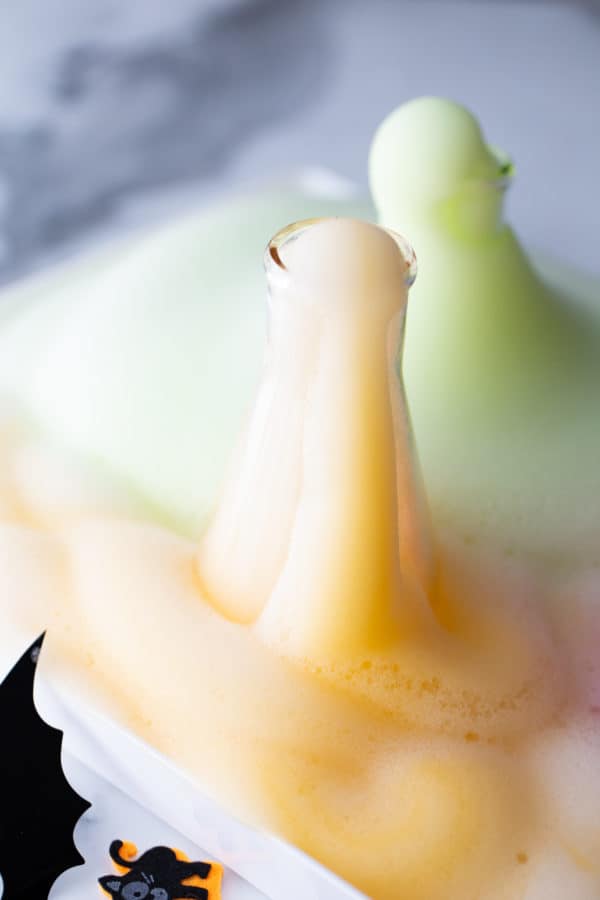
MORE FUN EXPERIMENTS FOR KIDS
Every kid needs to try a few classic science experiments that explore various concepts in chemistry, like chemical reactions!
- Magic Milk Experiment
- Mentos and Coke
- Skittles Experiment
- Salt Water Density Experiment
- Rubber Egg Experiment
- Volcano Project
- DIY Lava Lamp
Printable Science Experiments Pack
If you’re looking to grab all of our printable science projects in one convenient place plus exclusive worksheets and bonuses like a STEAM Project pack, our Science Project Pack is what you need! Over 300+ Pages!
- 90+ classic science activities with journal pages, supply lists, set up and process, and science information. NEW! Activity-specific observation pages!
- Best science practices posters and our original science method process folders for extra alternatives!
- Be a Collector activities pack introduces kids to the world of making collections through the eyes of a scientist. What will they collect first?
- Know the Words Science vocabulary pack includes flashcards, crosswords, and word searches that illuminate keywords in the experiments!
- My science journal writing prompts explore what it means to be a scientist!!
- Bonus STEAM Project Pack: Art meets science with doable projects!
- Bonus Quick Grab Packs for Biology, Earth Science, Chemistry, and Physics
